Click to view our Accessibility Statement or contact us with accessibility-related questions


















Massdrop 101: Intro to Key Switches

search
close
Sort by: Newest
keyboard_arrow_downGooms
119
Jan 12, 2018
https://input.club/the-comparative-guide-to-mechanical-switches/ more in-depth guide with acuation force, peak force, bottom out force, spring force, travel distance (overall travel, tactile event, acutation), & force-travel diagrams for every switch included in the guide from brands: Cherry MX, Gateron, Kailh, Outemu, Greetech, Razer, Zelios, Halo, Matias, Epic Gear etc.. I wish InputClub had all of the new Kailh switches that Novelkeys carries, although this guide is continually being updated as new switches come to maket. ( ͡° ͜ʖ ͡°)

TheOtherDave
40
Apr 22, 2017
Does anyone know how the Cherry MX latching switches worked? I got into DIY keyboards a bit too late to order some for caps-lock, num-lock, etc before they were discontinued. Now I'm trying to figure out if I can just "edit" an existing cherry switch, or if I'll have to find a way to mount something else there.

control
565
Jan 15, 2018
TheOtherDaveGeneral info on Deskthority here: https://deskthority.net/wiki/Cherry_MX_Lock
Datasheet on Cherry's site here: http://www.cherry.de/PDF/EN_CHERRY_MX1A-3xxx.pdf
The Deskthority page has pics of the switch taken apart and of all the individual parts. The switch has a small cog that turns and locks into place when the key is pressed and turns and unlocks when pressed again. The holes for LEDs are off-center and will not fit most PCBs though (if there are custom PCBs supporting them, please give me a heads up!).
I got my hands on a bunch of them when The Van Keyboards got hold of some old stock and sold them through their site. You could hunt for some on /r/mechmarket.
EDIT: Just noticed the question was posted 38 weeks ago.
Datasheet on Cherry's site here: http://www.cherry.de/PDF/EN_CHERRY_MX1A-3xxx.pdf
The Deskthority page has pics of the switch taken apart and of all the individual parts. The switch has a small cog that turns and locks into place when the key is pressed and turns and unlocks when pressed again. The holes for LEDs are off-center and will not fit most PCBs though (if there are custom PCBs supporting them, please give me a heads up!).
I got my hands on a bunch of them when The Van Keyboards got hold of some old stock and sold them through their site. You could hunt for some on /r/mechmarket.
EDIT: Just noticed the question was posted 38 weeks ago.

consolation
742
Apr 6, 2017
I don't think you should put Matias in the same line as Gateron and Cherry, their switches are simplified alps clones and work quite differently (they have a proper click plate for one, unlike cherries). I think you should make it clear that you are only covering how cherry types work.
SheepdogApproved
19
Jan 6, 2017
It would be really great if you guys could compile the weights and style of the gateron switches and maybe some others compared to the cherry switches. As they get more popular in drops, I'm deterred from buying keyboards with other brands of switch because I don't know how it compares to my current knowledge base!

LevelSteam
Jan 7, 2017
SheepdogApprovedHave you checked out deskthority? They have a pretty extensive workup on pretty much every type of switch available.

Nemoona
14
Jul 4, 2016
Is Cherry a superior company to other manufacturers who seem to copy Cherry's every move or are they all equal in quality and only differ in feel?

LevelSteam
Jan 7, 2017
NemoonaIt varies. Gateron is probably the highest quality Cherry clone that's widely available, and some of their linear switches are actually more sought after than their Cherry counterparts due to a smoother feel. Their clicky switches are a mixed bag imo, and can be very inconsistent in feel across a board. Most people I know that use those clicky switches buy a bulk order of them and try them out in a tester before soldering them into place. This helps weed out any mushy or 'off' feeling switches.
There seem to be a plethora of other Cherry clones available these days though, although other than Gateron (or some harder to get switches like Zealios) I wouldn't bother with them personally. The reason being that many of the budget switches available are of a somewhat lower quality which is noticeable. This can pertain to anything from inconsistent actuation points or spring weights, to quality issues like switches failing, wobbling, or squeaking over time.
There seem to be a plethora of other Cherry clones available these days though, although other than Gateron (or some harder to get switches like Zealios) I wouldn't bother with them personally. The reason being that many of the budget switches available are of a somewhat lower quality which is noticeable. This can pertain to anything from inconsistent actuation points or spring weights, to quality issues like switches failing, wobbling, or squeaking over time.

kschang
192
Jul 1, 2016
Always wonder if someone can make a synchronized animation on how the switch activates vs. how the movement shows on the "force graph".

flame3
25
May 28, 2016
I will say whether it's red, blue,clear,green, brown, and black switches will again depends on the preference on the individual rather than some switches are "made for gaming" or "preferred for gaming" and "good for gaming", please stop putting labels among switches.
And btw if anyone interested in translucent set of key caps, please do vote on my polls. https://www.massdrop.com/vote/Translucent-key-caps-for-cherry-MX
And btw if anyone interested in translucent set of key caps, please do vote on my polls. https://www.massdrop.com/vote/Translucent-key-caps-for-cherry-MX
MichaelR
11
May 28, 2016
Funny as i just think about getting a mechanical keyboard - i can actually use ...
I bought a Das Keyboard in black - totally black - and i blacked out tryig it in WoW for some time quite some time ago. The learning phase with the clean keys was too harsh for me so i need something with letters on it feeling good, too.
What about other keys btw? Cherry is not the full truth...
Logitechs Romer G (its Omron OEMs, right?) arent that bad and some others matter, too.
What about other keys btw? Cherry is not the full truth...
Logitechs Romer G (its Omron OEMs, right?) arent that bad and some others matter, too.
Showing 13 of 24
PRODUCTS YOU MAY LIKE
Trending Posts in Mechanical Keyboards

tbui
Absolutely stunning
The colors really pop on a white board. One of the best caps I own!
Dec 17, 2024
bobbibeer1976
False Advertising BEWARE
This company should be ashamed of themselves. Advertising to young people who save all their money and want nothing more than a keyboard and advertise to them that it is in stock and will be shipped asap and they will arrive before Christmas. Only to "ship" and package and get their hopes up and it arrives and there is no keyboard in the package. Then to get on the website and it isn't even going to ship until January. This happens AFTER you have received their money and made promises that it was arriving, on it 's way, etc! Shame Shame on you!!!
Dec 16, 2024

EuclideanGambit
Closest profile to MT3
I really enjoy the MT3 profile, it has actually become kind of difficult to type on other profiles. So I was looking for some that might be close and noticed the SA profile. I was wondering if there were anymore that were close to it. This would open my options significantly when shopping around.
Dec 15, 2024

bebo2
timing of delivery
I am wondering how much time does order takes to be delivered, when i was ordering site showed me it would takes from 3-5 business days is that accurate or it takes more time to be delivered
Dec 15, 2024

tbui
Displaying my DCD Lunar New Year set (Max)
Enough for a full base kit plus novelties, just gotta watch the ample space on top when moving/tilting and near the edges it gets tight so the caps don't fit in as smoothly.
Dec 15, 2024

HubertTheMad
GMK Sparta - Very Nice!
Cheeky GMK Sparta pic I took with the Greek sublegends child kit ("dual alphas") on a prototype board (QFRL100) I'm creating content for! It's a tad more gold IRL, and I'm still learning how to...
Dec 14, 2024
cobertt
Gasket Mounts
A gimmicky hype word, or purposeful implementation, gasket mounting has definitely changed the keyboard landscape. When looking for a new mechanical keyboard, one of the hot terms that come to mind is “gasket mounted”. It’s heavily advertised in the keyboard hobby, but what does it exactly mean? Why is it a buzz term, what are it’s benefits, and does it have any drawbacks? Today we do a deep dive in the world of gasket mount keyboards and what the buzz is all about. Many have seen the keyboard mounting style infographic arranged by Thomas Baart. It’s a great resource, but isn’t quite reflective of the current market. If I had better technical drawing skills, I might attempt a new one. As you can see in the image for the gasket mount, there are red gaskets identified. What isn’t accurate is that the screws for the case travel through the plate or that the plate is sandwiched between the top and bottom case. This would nullify any benefits that gasket mount provides. ...
Dec 13, 2024

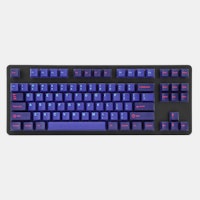
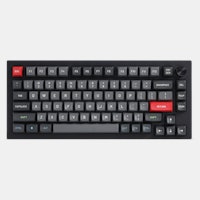
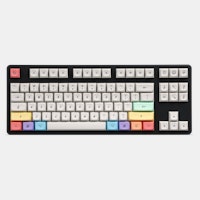
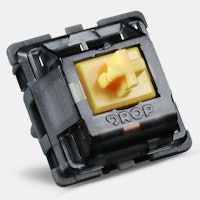
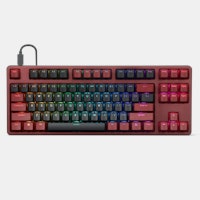
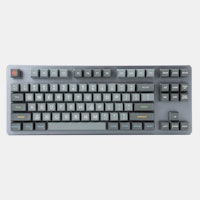

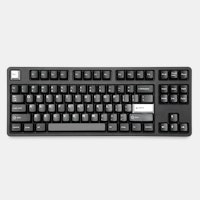
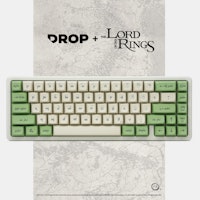
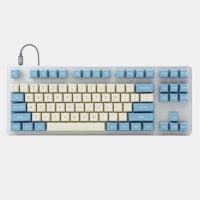




Key switches are the soul of any mechanical keyboard. After all, they turn keystrokes into the numbers, letters, and symbols that appear on your computer screen. But they also play a huge role in the overall feeling of the keyboard, not to mention the sound of it. Are they tactile clicky switches? Linear? Tactile non-clicky? We’ll explain the jargon in a moment. For now, suffice it to say that a mechanical keyboard wouldn’t be mechanical without key switches.
The Different Types of Key Switches
Cherry, Matias, Gateron—there are several companies that manufacture switches. Cherry is the best-known of the bunch, but as mechanical keyboards become more popular and enthusiasts seek to further customize their boards, other companies are entering the arena with slight variations on pre-existing switch designs. And most of these companies have mirrored Cherry’s approach to naming conventions, using the color of the stem to differentiate between switch types. Cherry MX Blacks, for example (MX is the series name), deliver a slightly different typing experience from Cherry MX Reds. Cherry MX Browns versus Cherry MX Blues, likewise. Almost all of these switch types fall into one of three main categories, though a select few fall under less-common subcategories. Which switch you choose will depend on the experience you prefer.
Linear switches, such as Cherry MX Reds and Blacks, require that the user applies an even amount of force—typically between 35 and 65 grams—to actuate a keystroke. Unlike other types of switches, linear switches are not designed to provide audible or tactile feedback, which lets you know when you’ve hit the actuation point. With linear switches, the only way to know a keystroke has registered is to see the letter, number, or symbol appear on your screen. The most common linear switches are 45-gram Reds and 60-gram Blacks, both of which are desirable for gaming, as they enable more rapid pressing of the keys.
Tactile Clicky
Tactile clicky switches, such as Cherry MX Blues, provide feedback in the form of a tactile “bump” and audible “click” each time a switch is actuated. This is useful for touch-typing, as the click alerts the user that the keystroke has registered. These switches have given mechanical keyboards a reputation for being considerably louder than their rubbery counterparts. To mitigate this effect and to prevent the keys from bottoming out, many manufacturers add a tiny O-ring to the bottom of the keycaps.
Tactile Non-Clicky
Some switches, such as Cherry MX Browns, provide tactile feedback without the noise. Cherry MX Clears, which are a slightly stiffer version of Browns, are immensely popular among the Massdrop community. They provide a satisfying typing experience, have an easily identifiable actuation point, and are quiet enough for use in offices and shared spaces.
Comparing Cherry MX Switches by Actuation Force
Linear:
Red = 45 g
Black = 60 g
Tactile Clicky:
Blue = 50 g
White = 55 g
Green = 80 g Tactile Non-Clicky:
Brown = 45 g
Clear = 55 g
Gray = 80 g
This is a mere glimpse at the wide world of mechanical key switches. Other varieties, such as Topre, feature a more complex mechanism that we’ll tackle in subsequent articles. For now, the takeaway is this: There’s no good or bad, right or wrong switch. The switches you choose should feel good to you—nobody else. They should maximize speed, minimize typos, and reduce finger fatigue. In short, they should elevate the experience of typing. Because that’s what mechanical keyboards are all about: a better user experience.
Questions, Comments, or Recommendations? Leave ‘em below, and someone from the community will be happy to help. Have personal recommendations or a switch tip to share? We’d love to hear about them—and see pictures, too!
Hit the "Follow" button to get notified about future articles from this account.